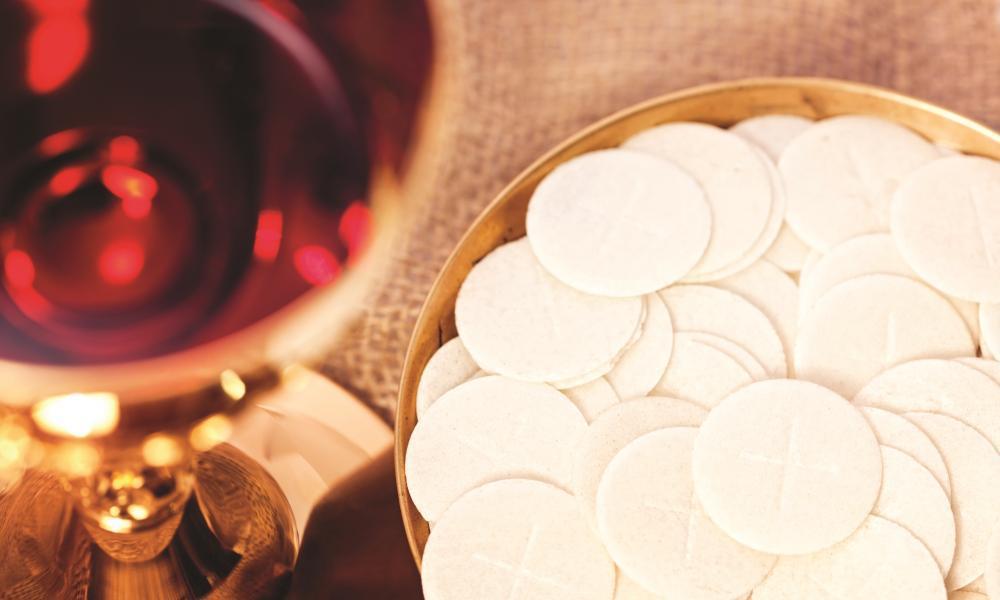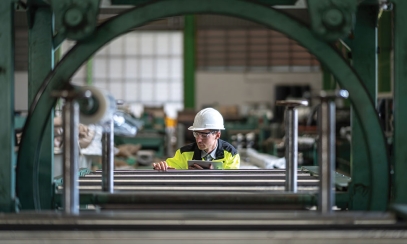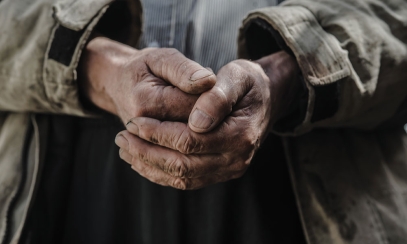
Encountering Christ in the Sacrament of the Eucharist
Hunger and thirst are powerful states. They are the concrete expressions of the body’s innate desire for life. They indicate a need that demands to be satisfied. They are incessant, calling out for our attention continuously, and in ever greater intensity through discomfort and pain. Ultimately, the price for failing to satisfy our hunger and thirst is death from starvation or dehydration.
We all know this. Hunger and thirst, in varying degrees of severity, are common human experiences. However, just as our physical bodies need food and water in order to live, our souls also need food and drink, the spiritual food and drink of righteousness, if we are to enjoy eternal life in communion with God.
The food and drink of righteousness
In Matthew’s Gospel, righteousness has to do with the saving activity of God. In other words, to fulfill all righteousness is to submit to the plan of God for the salvation of the human race. Our model for what this looks like is, of course, Jesus Christ.
Christ showed us what it means to live in righteousness through the witness of his very life. His incarnation, his living among us and sharing a full human existence, and his subsequent death on the cross all witness to Jesus’ complete submission to the Father’s plan for salvation. This plan, which was the will of the Father, was the spiritual food and drink which sustained Jesus on his earthly mission: “My food is to do the will of the one who sent me and to finish his work.” (Jn 4:34) And through his submission to the Father’s will, Jesus became the living sacrifice, or the very means for this salvation to be realized.
If we are to be of the “same mind, with the same love, united in heart, thinking one thing” (Phil 2:2) as Christ, which is the point of a life of faith, we, too, must empty ourselves in humble obedience and commit ourselves to doing only God’s will. We must do this until this desire emerges from our inmost being and overtakes us, incessantly demanding to be filled lest we perish from the starvation and dehydration that results when we are cut off from God, the sole source of life.
For they will be satisfied
If the salvation of humanity from the bondage of sin so that we may have life in eternal communion with the Holy Trinity is the plan of the Father, then Jesus Christ, through his submission to this plan, is the heart of the plan. The Gospel of John makes this clear. It quotes Jesus as saying, “I am the bread of life; whoever comes to me will never hunger, and whoever believes in me will never thirst … For this is the will of my Father, that everyone who sees the Son and believes in him may have eternal life, and I shall raise him on the last day.” (6:35; 40) Later in verse 51 of the same chapter, he continues, “I am the living bread that came down from heaven; whoever eats this bread will live forever; and the bread that I will give is my flesh for the life of the world.”
If this is true, the Eucharist, the source and summit of the Christian life, has in fact become the food and drink that alone satisfies. A profound intimacy of communion with the Divine takes place when the body and blood of Christ, who takes away the sins of the world, are received by the believer. This moment is truly a foretaste of that eternal communion for which we are destined.
Put another way: to hunger and thirst for righteousness is to hunger and thirst to do the will of God. The will of God is the salvation of humanity accomplished through Jesus Christ, the same Jesus who offers us his body and blood in atonement for the sins of the world. To hunger and thirst for righteousness, then, is to hunger and thirst for the Bread of Life that alone can satisfy our hunger and thirst for eternal life. This same Bread of Life is offered to us freely through the grace of God in the Eucharist. What a gift!
DID YOU KNOW …
Catholics are obliged to receive the Eucharist at least once a year, preferably during the Easter season. At the same time, the Church strongly encourages Catholics to receive the Eucharist on Sundays, feast days and even daily.
– Catechism of the Catholic Church (1389)
THE EUCHARIST BY ANY OTHER NAME …
The Eucharist by any other name is still the Eucharist. Still, the Church’s use of different names for the Eucharist expresses the inexhaustible richness of the sacrament. For example, the Eucharist is also known as the Lord’s Supper, the Breaking of Bread, the Eucharistic assembly (or synaxis), the memorial of the Lord’s Passion and Resurrection, the Holy Sacrifice, the Holy and Divine Liturgy, Holy Communion and even the Holy Mass (Missa).
– Catechism of the Catholic Church (1328-1331)
The fruits of the Eucharist
The Eucharist produces many wonderful fruits:
• Intimate union with Christ (the principal fruit)
• Nourishment for the preservation, increase and renewal of the life of grace received at baptism
• Cleansing of our past sins and preservation from future sins – both mortal and venial
• Strength for our charity, which wipes away our venial sins
• Unity within the Church
• Commitment to the poor
– Catechism of the Catholic Church (1391-1397)
Christ’s presence in the Eucharist
Christ is present to his Church in his word, in the Church’s prayer, in the poor, the sick and the imprisoned, in the Mass, and in all the sacraments which he instituted. However, he is most especially present in the Eucharist. In the sacrament of the Eucharist, Christ is not merely symbolically present, but truly, really and substantially present, body and blood with the soul and divinity.
This presence begins at the consecration and lasts as long as the Eucharistic species of bread and wine exist. Christ is also wholly present in the bread and wine together as well as in them separately. For this reason, if one were to only receive the bread, she/he would still be receiving the whole Christ. – Catechism of the Catholic Church (1373-74, 1377)



